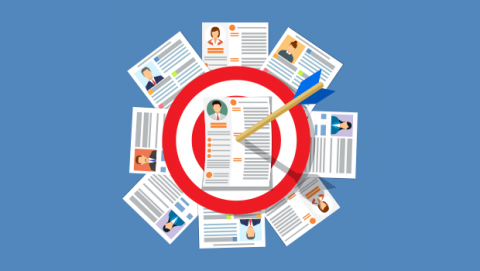6 business risks of shortchanging AI ethics and governance

When enterprises build AI systems that violate users’ privacy, that are biased,
or that do harm to society, it changes how their own employees see them.
Employees want to work at companies that share their values, says Steve Mills,
chief AI ethics officer at Boston Consulting Group. “A high number of employees
leave their jobs over ethical concerns,” he says. “If you want to attract
technical talent, you have to worry about how you’re going to address these
issues.” According to a survey released by Gartner earlier this year, employee
attitudes toward work have changed since the start of the pandemic. Nearly
two-thirds have rethought the place that work should have in their life, and
more than half said that the pandemic has made them question the purpose of
their day job and made them want to contribute more to society. And, last fall,
a study by Blue Beyond Consulting and Future Workplace demonstrated the
importance of values. According to the survey, 52% of workers would quit their
job — and only 1 in 4 would accept one — if company values were not consistent
with their values.
The Never-Ending To-Do List of the DBA

Dealing with performance problems is usually the biggest post-implementation
nightmare faced by DBAs. As such, the DBA must be able to proactively monitor
the database environment and to make changes to data structures, SQL,
application logic, and the DBMS subsystem itself in order to optimize
performance. ... Applications and data are more and more required to be up and
available 24 hours a day, seven days a week. Globalization and e-business are
driving many organizations to implement no-downtime, around-the-clock systems.
To manage in such an environment, the DBA must ensure data availability using
non-disruptive administration tactics. ... Data, once stored in a database, is
not static. The data may need to move from one database to another, from the
DBMS into an external data set, or from the transaction processing system into
the data warehouse. The DBA is responsible for efficiently and accurately moving
data from place to place as dictated by organizational needs. ... The DBA must
implement an appropriate database backup and recovery strategy for each database
file based on data volatility and application availability
requirements.
The brave, new world of work

The recent disruptions to the physical workplace have highlighted the importance
of the human connections that people make on the job. In an excerpt from her new
book, Redesigning Work, Lynda Gratton of the London Business School plays off an
insight made nearly 50 years ago by sociologist Mark Granovetter. Granovetter
famously discussed the difference between “weak” and “strong” social ties and
showed that, when it came to finding jobs, weak ties (the loose acquaintances
with whom you might occasionally exchange an email but don’t know well) could
actually be quite powerful. Gratton applies this thinking to the way that
networks are formed on the job, and to how people organize to get their work
done, get new information, and innovate. She concludes that, especially in an
age of remote and hybrid work, companies have to redouble their efforts to
ensure that employees are able to establish and mine the power of weak ties. For
Gratton, the ability to create such connections is a must-have. ... Now more
than ever, people have to engage in the often challenging task of drawing
boundaries.
Most-wanted soft skills for IT pros: CIOs share their recruiting tips

Today’s IT organizations are called upon to drive and deliver significant
transformation as technology seeps into all corners of a company and its
products and services. With that, new and refined skills are necessary for
successful technology leaders to influence business outcomes, innovation, and
product development. Empathy, managing ambiguity, and collaborative influence
drive innovation and are attributes we look for at MetaBank as we hire and
develop top talent. Empathy lies at the core of successful problem-solving –
viewing a problem from various angles leads to better solutions. ... Leaders
often face challenging circumstances where they must quickly make a tough call
with insufficient information. Making good choices in these situations can be
critical for an organization’s success. It isn’t always easy to assess this in
an interview, but behavioral interview questions and careful follow-up can help
elicit specific examples from a candidate’s past work experience that may shed
light on their judgment.
6 key steps to develop a data governance strategy

Much of the daily work of data governance occurs close to the data itself. The
tasks that emerge from the governance strategy will often be in the hands of
engineers, developers and administrators. But in too many organizations, these
roles operate in silos separated by departmental or technical boundaries. To
develop and apply a governance strategy that can consistently work across
boundaries, some top-down influence is required. ... Horror stories of fines for
breaching the EU's GDPR law on data privacy and protection might keep business
leaders awake at night. This drastic approach may generate some interoffice
memos or even unlock some budgetary constraints, but that would be a defensive
reaction and possibly create resentment among stakeholders, which is no way to
secure long-term good data governance. Instead, try this incremental approach,
which should be much more attractive to executives: "Data governance is
something we already do, but it's largely informal and we need to put some
process around it. In doing so, we will meet regulatory demands, but we will
also be a more functional, resilient organization."
8 Master Data Management Best Practices

When software development began embracing agile methodologies, its value to the
business skyrocketed. That’s why we believe a MDM best practice is to embrace
DataOps. hen software development began embracing agile methodologies, its value
to the business skyrocketed. That’s why we believe a MDM best practice is to
embrace DataOps. DataOps acknowledges the interconnected nature of data
engineering, data integration, data quality, and data security/privacy. It aims
to help organizations rapidly deliver data that not only accelerates analytics
but also enables analytics that were previously deemed impossible. DataOps
provides a myriad of benefits ranging from “faster cycle times” to “fewer
defects and errors” to “happier customers.” (source) By adopting DataOps, your
organization will have in place the practices, processes, and technologies
needed to accelerate the delivery of analytics. You’ll bring rigor to the
development and management of data pipelines. And you’ll enable CI/CD across
your data ecosystem.
5 tips for building your innovation ecosystem

A common mistake when looking for innovative technology vendors is to look at
companies touted as the most innovative or to go with best-of-breed, on the
assumption that innovation is baked into their roadmap. It’s likely that neither
approach will net you the innovation you’re looking for. Best-of-breed works
well for internal IT such as your ERP or CRM, or anything under the covers in
terms of client-facing solutions, but when it comes to your value proposition
and differentiation you need to look elsewhere. In this case, the best-of-breed
tools become the table stakes that you utilize as the foundation for your
ecosystem or industry-cloud and your core IP comprises your own IP plus that of
those innovative players that you’ve developed unique relationships with. The
“most innovative” lists you find on the internet are often based on public or
editor opinion and end up surfacing the usual suspects with strong brand
awareness. While they may be leading players in the market, this does not
guarantee continued innovation. If you do look at the “most innovative” lists,
be sure to check the methodology involved and see how it fits your own
definition and expectations for what constitutes innovation.
Zen and the Art of Data Maintenance: All Data is Suffering (Part 1)

Data can be used for many types of nefarious activities. For instance, an
article in Wired described how a website stored video data regarding child sex
abuse acts and how they used this data in threatening, destructive ways
leading to all sorts of suffering including suicide attempts.[i]
We are often bombarded with social media data (both factual and
misinformation) that are designed to hold our attention through emotional
disturbances such as fear. These are generally intended to elicit reactions or
control behavior regarding many matters including purchasing, voting,
mindshare, or almost any other matter. Have you suffered with data? How? Data
is the plural form of the Latin word, ‘datum’, which Merriam Webster defines
as ‘something given or admitted as a basis for reasoning or inference’. Thus,
everything we receive through our senses could be considered data. It could be
numbers, text, things we see, hear, or feel. But how could all data be
suffering? What about positive data that communicates increased sales, better
health, positive comments, data showing helpful contributions, and so
on?
The Metamorphosis of Data Governance: What it Means Today

There’s nothing more galvanizing to an organization’s board of directors—or
the C-Level executives who directly answer to it—than stiff monetary penalties
for noncompliance to regulations. Zoom reached a settlement for almost $100
million dollars for such issues. Even before this particular example, data
governance was inexorably advancing to its current conception as a means of
facilitating access control, data privacy, and security. “These are big ticket
fines that are coming up,” Ganesan remarked. “Boards are saying we need to
have guardrails around our data. Now, what has changed in the last few years
is that part of governance, which is security and privacy, is going from being
passive to more active.” Such activation not only entails what data governance
focuses on, but also what the specific policies it’s comprised of focus on,
too. The regulatory, risk mitigation side of data governance is currently
being emphasized. It’s no longer adequate to have guidelines or even rules
about how data are accessed on paper—top solutions in this space can propel
those policies into source systems to ensure adherence when properly
implemented.
Five Steps Every Enterprise Architect Should Take for Better Presentation

Architects invariably care about the material they’re discussing. The mistake
is believing or assuming that the audience cares as intently. They may. They
may already be familiar with the content. This may simply be a status update
on the latest digital transformation project and everyone is knowledgeable
about the subject matter. ... Generally speaking, the audience isn’t going to
automatically care as much about the material as does the Architect
presenting. The key to this step is usually the hardest of all the points made
in this article. The key is empathy. Thinking what you would do or what you
would be interested in if you were the listener is not empathy. That’s simply
you projecting your own headspace onto the audience. Trying to understand how
that person is receiving your information is the key. Why do they care, what
aspects will they be interested in. To do this requires knowing in advance who
you will be speaking to and knowing their background, their education, their
professional position, their issues or problems with the subject at hand…
knowing, in effect, through what lens they will be viewing your content.
Quote for the day:
"Leadership should be born out of the
understanding of the needs of those who would be affected by it." --
Marian Anderson
No comments:
Post a Comment